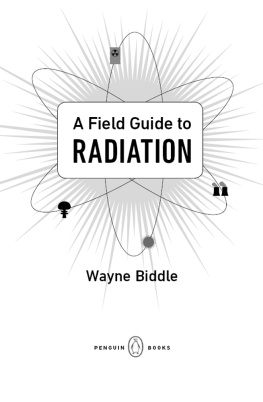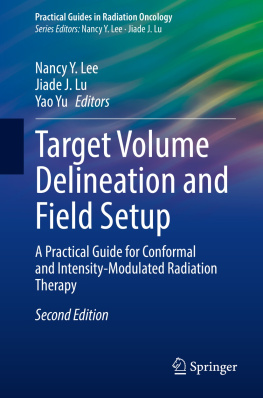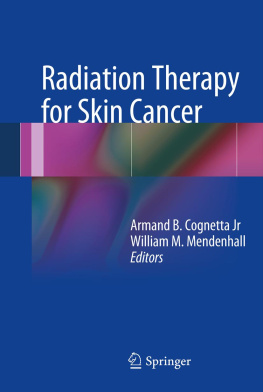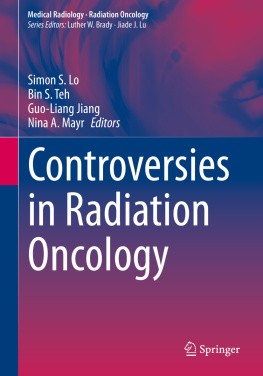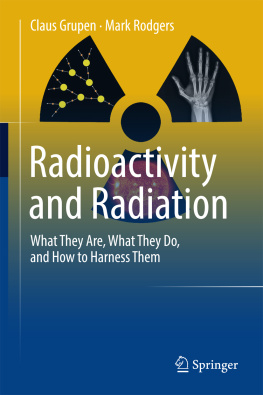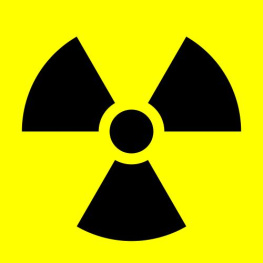PENGUIN BOOKS

A FIELD GUIDE TO RADIATION
Wayne Biddle won a Pulitzer Prize for his reporting on the Star Wars antimissile project. He is the author of five previous books, including A Field Guide to Germs, winner of the American Medical Writers Associations Walter C. Alvarez Honor Award, and Dark Side of the Moon, which was selected as a New York Times Book Review Editors Choice. He teaches at Johns Hopkins University.
ALSO BY WAYNE BIDDLE
Dark Side of the Moon
A Field Guide to the Invisible
A Field Guide to Germs
Barons of the Sky
Coming to Terms
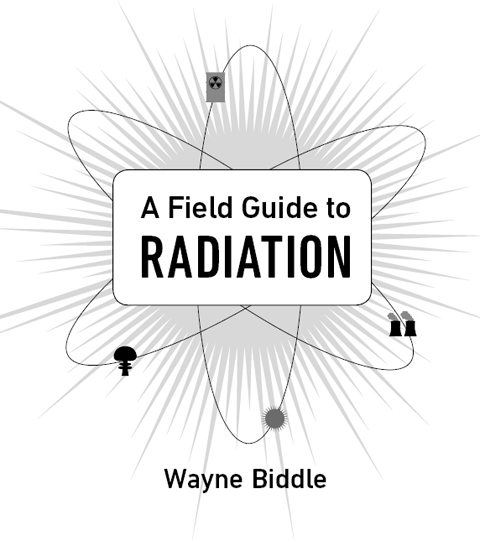

PENGUIN BOOKS
Published by the Penguin Group
Penguin Group (USA) Inc., 375 Hudson Street, New York, New York 10014, U.S.A.
Penguin Group (Canada), 90 Eglinton Avenue East, Suite 700, Toronto,
Ontario, Canada M4P 2Y3 (a division of Pearson Penguin Canada Inc.)
Penguin Books Ltd, 80 Strand, London WC2R 0RL, England
Penguin Ireland, 25 St Stephens Green,
Dublin 2, Ireland (a division of Penguin Books Ltd)
Penguin Group (Australia), 250 Camberwell Road, Camberwell,
Victoria 3124, Australia (a division of Pearson Australia Group Pty Ltd)
Penguin Books India Pvt Ltd, 11 Community Centre,
Panchsheel Park, New Delhi - 110 017, India
Penguin Group (NZ), 67 Apollo Drive, Rosedale, Auckland 0632,
New Zealand (a division of Pearson New Zealand Ltd)
Penguin Books (South Africa) (Pty) Ltd, 24 Sturdee Avenue,
Rosebank, Johannesburg 2196, South Africa
Penguin Books Ltd, Registered Offices:
80 Strand, London WC2R 0RL, England
First published in Penguin Books 2012
10 9 8 7 6 5 4 3 2 1
Copyright Wayne Biddle, 2012
All rights reserved
Pages constitute an extension of this copyright page.
LIBRARY OF CONGRESS CATALOGING IN PUBLICATION DATA
Biddle, Wayne.
A field guide to radiation / Wayne Biddle.
p. cm.
Includes bibliographical references and index.
ISBN: 978-1-101-58115-5
1. Radiation. 2. Radioisotopes. 3. Radioactive substances. I. Title.
QC475.B484 2012
539.2dc23 2012009025
Printed in the United States of America
Set in Adobe Garamond Pro
Designed by Judith Stagnitto Abbate / www.abbatedesign.com
Except in the United States of America, this book is sold subject to the condition that it shall not, by way of trade or otherwise, be lent, resold, hired out, or otherwise circulated without the publishers prior consent in any form of binding or cover other than that in which it is published and without a similar condition including this condition being imposed on the subsequent purchaser.
The scanning, uploading and distribution of this book via the Internet or via any other means without the permission of the publisher is illegal and punishable by law. Please purchase only authorized electronic editions, and do not participate in or encourage electronic piracy of copyrighted materials. Your support of the authors rights is appreciated.
ALWAYS LEARNING
PEARSON
MIDORI NAKA
JUNE 19, 1909AUGUST 24, 1945

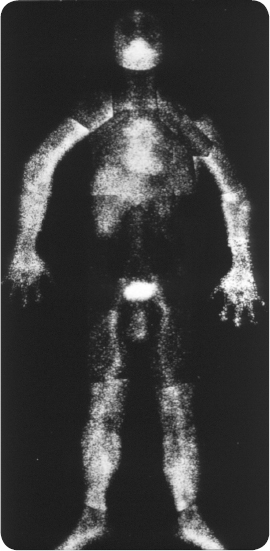
Do you feel like I do? A composite photograph showing the movement of isotopes in the human body.
Introduction
S INCE THE MANHATTAN PROJECT made the energy that holds matter together available as a useful source of power, there have been five occasions when life has been threatened on a wide scale by atomic devices: the bombings of Hiroshima and Nagasaki in 1945; the outdoor testing of nuclear weapons in many locations from 1945 until 1980; the reactor meltdown at Three Mile Island in Pennsylvania in 1979; the reactor explosion at Chernobyl in Ukraine in 1986; and the multiple reactor failures at Fukushima in Japan in 2011. Although radiation is a fundamental process of the universe, these events of the last seven decades represent together the first time in 3.8 billion years that radiation has harmed life in an acute way.
We live under a kind of duress for which we did not evolve. And we are trapped, because the bombs and reactors we have built cannot be completely removed now. Even if the construction of new ones were halted and the old structures were destroyed (the Japanese government estimates that decommissioning the ruined Fukushima Daiichi plant will take forty years and require robots and other new technologies that do not yet exist), the huge quantities of radioactive material that fueled them will remain dangerous for tens of thousands of years. And we have no safe place to put it alljust defining what safe could mean for that much time seems absurd. Nuclear technology has the alarmingly unique characteristic that intentional or accidental release of massive amounts of radiation from this fuel in a small locality quickly spreads around the globe, creating hazards far away. In effect, our planet is newly hostile, and we need to find a practical way to mitigate the risk of living on it.
Unfortunately, radiation is not an intuitively obvious subject like, say, the weather. After its discovery during the last decade of the nineteenth century, radiation took some of the most inspired scientific research in modern history to decipher its nuances. All elements have at least one radioactive isotope, but there are dozens whose radioisotopes are not found in nature; they must be produced artificially. All elements with 83 or more protons in their nucleus are radioactive in all forms, but so are technetium, with 43, and promethium, with 61. Fortunately, nonexperts can acquire a working knowledge of radiation basics, just as they can learn how to sort out the vast intricacy of the earths flora and fauna. Field guides were developed long ago for this general purpose. Carl Linnaeus (17071778), the great Swedish botanist and father of modern taxonomy, quipped in 1737 that the difference between an animal and a botanist is that a botanist is equipped to communicate knowledge about plants to others. The first book of French naturalist Jean-Baptiste de Monet de Lamarck (17441829), published in 1779 and called Flore franoise, described some four thousand species of plants. Its 1,200 copies sold out quickly and, most important, it was reprinted after the French Revolution, when the formation of democratic coles centrales fueled the publication of innovative textbooks. (Lamarck no doubt aided his career, and perhaps saved his head, when, as keeper of Louis XVIs herbarium in 1790, he changed the name of the royal Jardin du Roi to Jardin des Plantes.) Laymen appreciated that Lamarck wrote in common French, rather than Latin. A second edition of Flore, in 1805, sold five thousand copies, an extraordinary number for the era. The birth of English-language field guides had to wait several decades for the dilution of post-Revolution anti-French sentiment among the British intelligentsia. Thomas Nuttalls Manual of the Ornithology of the United States and of Canada (18321834) is considered the first such resource. The shift from buckshot to binoculars ensured a mass market for bird guides in the twentieth century, and today they are read by people who may never look beyond their kitchen window, serving as a model for organizing other complex subjects.
Next page
